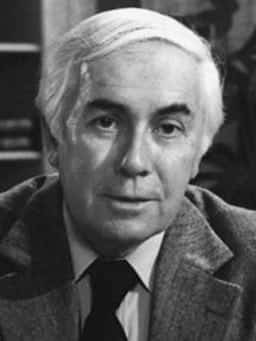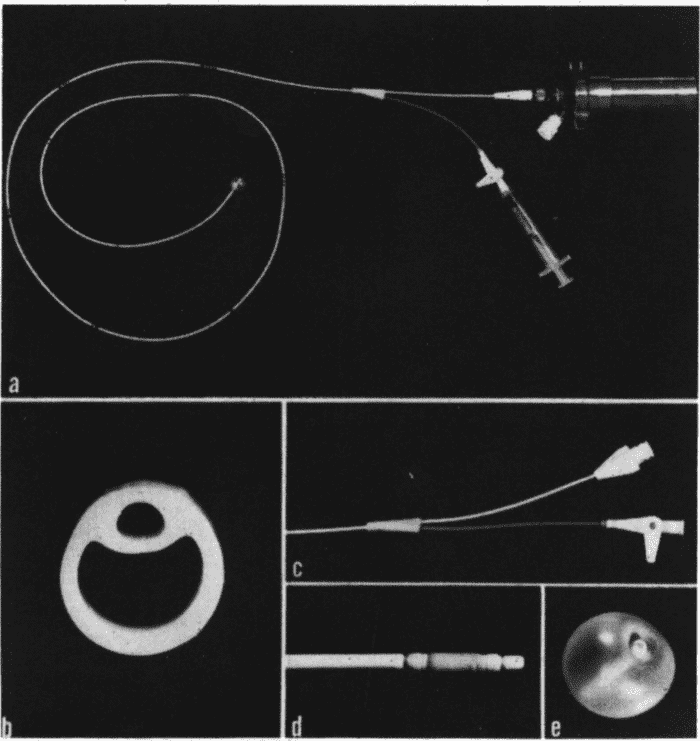Jeremy Swan

Harold James Charles ‘Jeremy’ Swan (1922-2005) was an Irish cardiologist, innovator and a prominent figure within the world of cardiology.
Swan was a celebrated personality of the American College of Cardiology, an avid sportsman and amateur middle weight boxer. He was awarded the highest degree of academic achievement by the college.
Although he is best remembered as co-inventor of the Swan-Ganz catheter with William Ganz at Cedars-Sinai Medical Center in 1970, his scientific contributions are extensive and recognised by the numerous awards listed in the biography below.
The inspiration for the catheter was derived from sailboats Swan observed at Santa Monica Beach in 1967. His original concept was to attach a small sail at the end of the catheter; allowing it to glide through the right atrium, right ventricle and eventually to the pulmonary artery. In 1970 it would be later modified with a balloon tipped catheter that Swan, William Ganz and others would publish a report on1. The advent of quantitative haemodynamic bedside assessment afforded an insight into the physiology of the critically ill and guided therapy. Almost 40 years later, the Swan-Ganz catheter is still in use in cardiac surgery and critical care.
Biography
- Born on December 1, 1922 in Sligo, Ireland
- 1939 – Graduated Trinity College Dublin, Dublin, Ireland. During college Jeremy suffered from an attack of meningitis resulting in a coma and subsequently treated by his own mother with administration of sulphonamides.
- 1939-45 – Bachelor of Medicine (M.B), University of London
- 1945 – Intern and junior resident in medicine at St Thomas’s Hospital, London, United Kingdom
- 1946 – Joined the British Royal Air Force under the role of squadron leader and medical specialist at Royal Air Force hospital in central Iraq
- 1948 – Began work as a research fellow under eminent English Nobel laureate and pharmacologist Sir Henry Hallett Dale (1875-1978); PhD working on the Vascular system at St Thomas’s Hospital, London
- 1951 – Invited by Earl Howard Wood (1912-2009) to work at the Mayo Clinic in Rochester, MN firstly as a fellow and later as director of the cardiac catheterisation laboratory.
- 1965 – Appointed chief of cardiology at Cedars of Lebanon Hospital (Later known as Cedars-Sinai Medical Centre), Los Angeles, United States
- 1967 – Conceptualised the pulmonary artery catheter
- 1970 – Swan and William Ganz publish report on Catheterization of the heart in man with use of a flow-directed balloon-tipped catheter1.
- 1973 – President, American College of Cardiology
- 1987 – Retired as chief of the Division of Cardiology, after 22 years, at Cedars-Sinai Medical Centre, Los Angeles, United States of America
- 1985 – Distinguished Fellow of American College of Cardiology
- 1992 – Tragic death of daughter (Katherine) with metastatic cervical cancer. Eulogy titled “Kath” published in the Annals of Internal Medicine.
- 1999 – Distinguished service award by the American College of Cardiology
- 2001 – Master of the college by the American College of Cardiology. Later this year swan unfortunately suffered a stroke with residual hemiparesis.
- 2003 – Received highest academic award for distinguished scientific achievement by the American College of Cardiology & the American College of Chest Physicians.
- Awards – Walter Dixon Memorial Award of the British Medical Association, Maimonides Award of the State of Israel, Herrick Award for outstanding achievement in Clinical Cardiology from the American Heart Association, Theodore Cummings Humanitarian Award from Cedars-Sinai Hospital
- Died on February 7, 2005 in Los Angeles
Medical Eponyms
Swan-Ganz catheter – pulmonary artery catheter (1970)
Pictured below is the “extruded polyvinyl-chloride catheter 1.7mm in outer diameter” with the balloon tipped catheter and “attached to a strain-gauge catheter.” The pulmonary artery was accessed via “antecubital-vein cutdown” during the inception.

Major Publications
- Swan HJ, Zapata-Diaz J, Burchell HB, Wood EH. Pulmonary hypertension in congenital heart disease. The American Journal of Medicine. 1954 Jan 16(1); 12-22.
- Swan HJ, Ganz W, Forrester J, Marcus H, Diamond G, Chonette D. Catheterization of the heart in man with use of a flow-directed balloon-tipped catheter. N Engl J Med. 1970; 283(9): 447-451.
- Swan HJ. Kath. Ann Intern Med. 1992 Dec 15;117(12):1049-50.
- Ganz W, Tamura K, Marcus HS, Donoso R, Yoshida S, Swan HJ. Measurement of coronary sinus blood flow by continuous thermo-dilution in man. Circulation. 1971; 44; 181-95.
References
Biography
- Pearce, J. Jeremy Swan Is Dead at 82; Cardiologist and Innovator. The New York Times. 2005 Feb
- Forrester J, Kaul S, Shah P. Harold James Charles (“Jeremy”) Swan, MD, PhD. The American Journal of Cardiology. 2006 97(10); 1545-1546.
- Amsterdam EA. Harold J.C. (Jeremy) Swan, MD, PhD (1923–2005). Preventive Cardiology. 2007; 8(2): 75.
- Pham JTH. Harold James Charles (Jeremy) Swan: the man behind the “sailing catheter.” Hektoen International: Journal of Medical Humanities. 2016
- Bibliography. Swan, H. Jeremy. WorldCat Identities
Eponymous terms
- Palmieri T . The inventors of the Swan–Ganz catheter: H. J. C. Swan and William Ganz. Current Surgery. 2003, 60(3); 51-352.
- Billimoria AR. Pioneers in Cardiology: Jeremy Swan. Journal of the Association of Physicians of India. 2013; 61: 428
- Nickson C. History of the Pulmonary Artery Catheter. LITFL
[cite]
Resident Medical Officer currently working in Emergency Department at Sir Charles Gairdner Hospital. Pianist and avid Golfer | LinkedIn |

I was a new RN graduate of 1975 and worked in one of the first coronary care units outside of Boston. Jeremy Swan introduced the swan in the mid 70’s at my unit and oriented us in their use. The transducer was filled manually with sterile water and twisted, then calibrated to mercury sphygmomanometer. I am mow an RN for 47 years and have done everything imaginable in critical care, heart transplant, lvads, These catheters charged CCU forever! Respectfully submitted, Wendy C. RN